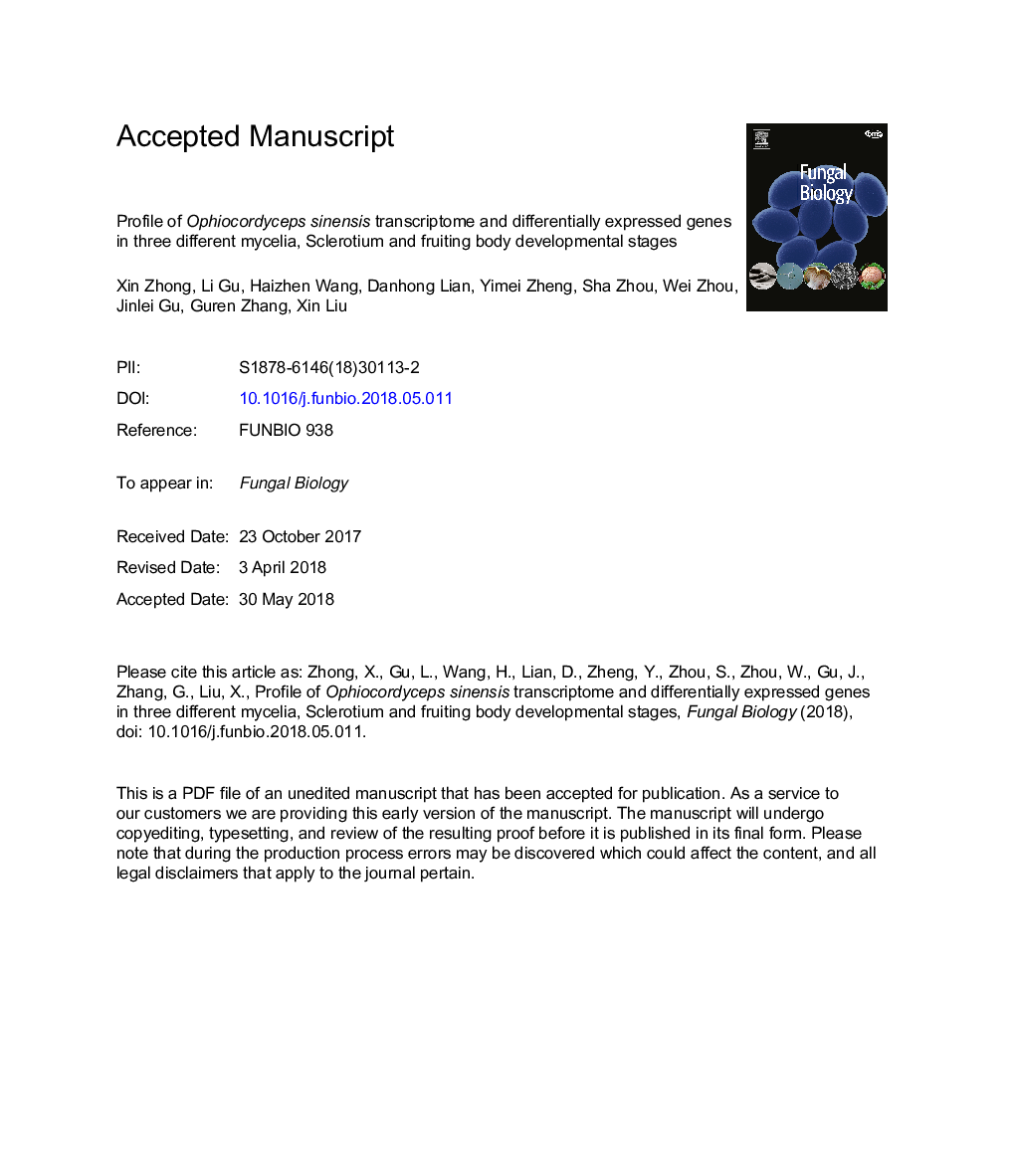| Article ID | Journal | Published Year | Pages | File Type |
|---|---|---|---|---|
| 10223212 | Fungal Biology | 2018 | 31 Pages |
Abstract
Ophiocordyceps sinensis, a Chinese complementary and alternative medicine (CAM), is an entomopathogenic, fungus, parasitizing larvae of the moth genus Thitarodes. It has three stages of the life cycle, i.e., the anamorph mycelia prior to infection (Cm_Os), the mycelia sclerotium forming in the caterpillar (Te_Ca), and the fruiting bodies or stromata (Te_St). Characterization of the O. sinensis transcriptome among these stages could provide a better understanding of the underlying biology processes. Transcriptomics of the O. sinensis asexual mycelia and hyphae in deceased caterpillars and perithecial stroma was assessed by using Illumina HiSeq⢠2000 technology. A total of 14,922 unigenes were identified and categorized into 46 sub-categories under three gene ontology categories (“biological process”, “cellular component”, and “molecular function”). Of these genes, 5520 were differentially expressed among the libraries of these three groups of samples (P < 0.05), and 391 genes occurred in all three groups. Compared to the anamorph stage, there were 3049 differentially expressed genes (DEGs) in the teleomorph stage, but only 1023 DEGs occurred within the teleomorph groups (Te_St vs. Te_Ca). Collectively, this study provides a novel resource to further investigate O. sinensis and their three different development stages.
Related Topics
Life Sciences
Agricultural and Biological Sciences
Agricultural and Biological Sciences (General)
Authors
Xin Zhong, Li Gu, Haizhen Wang, Danhong Lian, Yimei Zheng, Sha Zhou, Wei Zhou, Jinlei Gu, Guren Zhang, Xin Liu,
